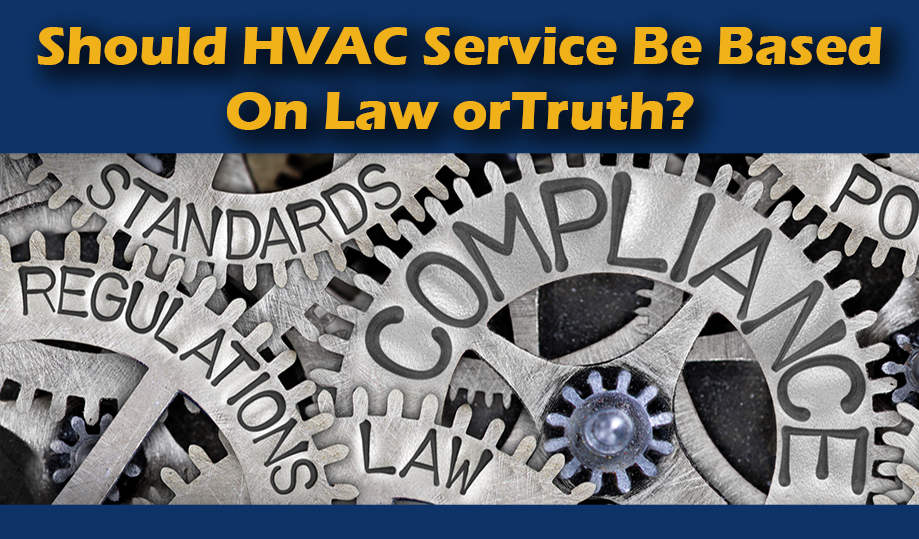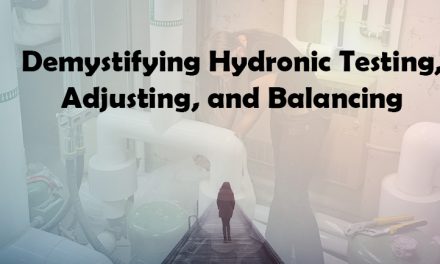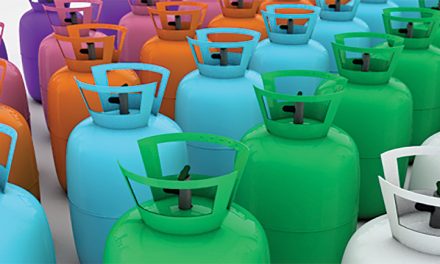Here’s the Truth
We have all been indoctrinated to do our jobs according to what others have done for generations. They are traditions. The scariest part is that most technicians don’t test their repairs or modifications to verify what they did works.
If you think I’m full of it, I can prove it with these questions.
- Is hooking up your gauges the first thing you do when you service an air conditioning unit?
- Do you adjust gas pressure to a certain inches of water closet (in.-w.c.) when tuning a furnace.
If you answered yes to either question, you have been brainwashed to think this is the correct process.

Test-ins are the most crucial test you can do on any system. Test-ins allow you to see all the invisible issues that occur. The discovery of the hidden issues starts with Total External Static Pressure (TESP).
Indoor fans only operate correctly under maximum rated TESP — when TESP is too high, equipment airflow is reduced. High TESP often results in airflow of around 285 CFM (cubic feet per minute). That’s far less than it should be — 350 CFM to 450 cfm. Typically, this is what you need for a unit to operate correctly. Of course, that’s dependent on climate.
Here’s a thought: As HVAC technicians, you are not refrigerant pressure checkers; you are heat transfer detectives. Everything that you do revolves around transferring heat. The equipment removes or adds heat to the air.
Airflow across the indoor and outdoor coil must be correct in cooling mode. Proper airflow allows the right amount of indoor air heat to be removed and the proper amount of heat rejection through the outdoor unit. This is the principle of taking heat from one place and transferring it to another.
Lack of Airflow contributes to many of the issues you run into on every call. Among the issues are low superheat, high head pressure, intermittent pressure switch faults, refrigerant overcharge, erratic TXV (thermal expansion valve behavior, failed compressor, failed blower motors, high limit switch trips, etc.
Low airflow results in excessive heat in heating mode, which wears out heat exchangers and other components. Ponder this for a second: you tune up a furnace to 3.5-in. w.c. on the gas valve, and your ΔT is 71°F.
The equipment’s nameplate data specifies 3.5-in. w.c. with a 45° to 75° temperature rise. So all is good, right?
Wrong! You have shortened the life of that unit. If you took some extra time and used a combustion analyzer with the proper measurements, you would have discovered the airflow was only at 76% of what was required.
Seek To Understand
One of my favorite sayings from Stephen Covey is SEEK TO UNDERSTAND.
I always get a kick out of children who always ask WHY. When they are told not to do something, they will ask, “Why?” If I say I’m fixing something, they ask, “Why?” At every turn and every situation, they always ask that question.
As adults, we’ve lost that. It goes back to the saying, don’t ask, just do. In the High-Performance HVAC world, technicians should change that to ask why, to test, and then discover and confirm the truth of how well an HVAC system is operating.
The laws in the books today are only useful truths if you can test and find them valid consistently. As technicians, I believe it is our job always to seek to understand by asking why at every turn. Doing this will help you recognize what is true or false and right or wrong. That is the key to your success and customers’ comfort and safety.
By the way, this stuff isn’t always easy, so when you are stuck or unsure about a situation, I invite you to contact me at any time.
Casey Contreras is an instructor for National Comfort Institute since 2015. He has many years of residential, light commercial installation, and service experience. Casey became NCI certified in residential and light commercial air balancing, HVAC system performance, duct system optimization, and CO and combustion. He can be reached at ncilink.com/ContactMe.













Recent Comments